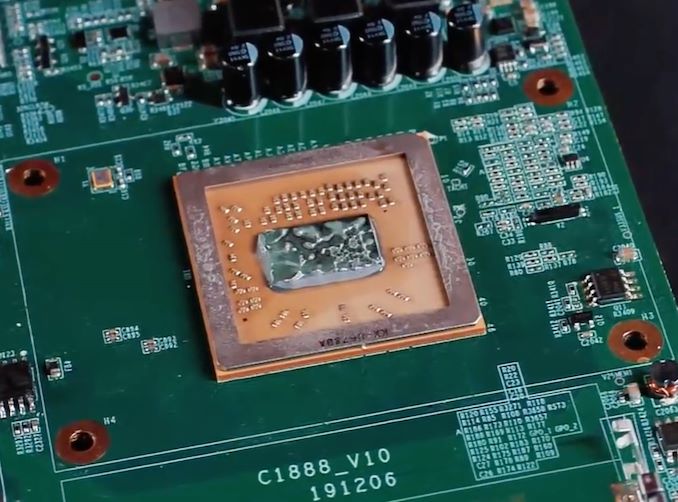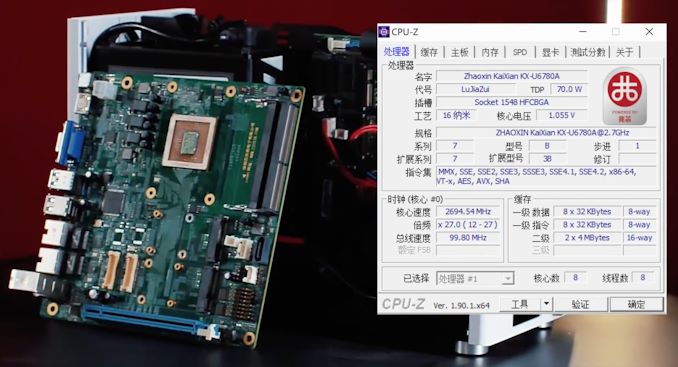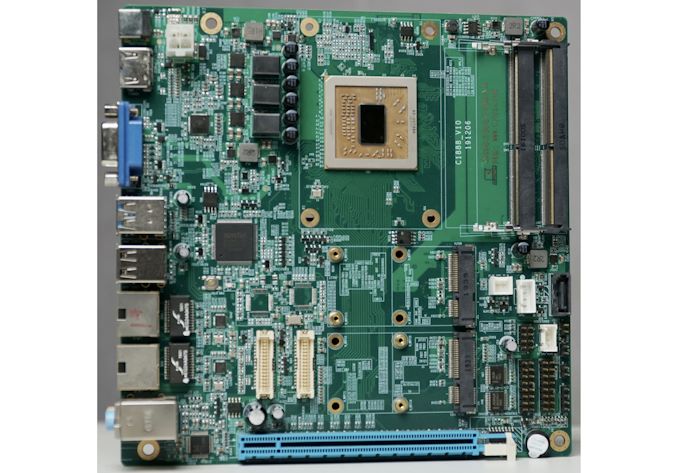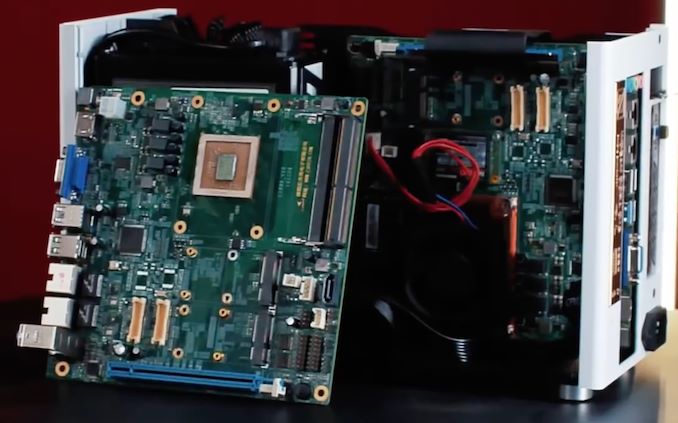Zhaoxin’s x86-Compatible CPUs for DIY Enthusiasts Now Available
by Anton Shilov on January 29, 2020 1:00 PM EST
Zhaoxin, a joint venture between Via Technologies and the Chinese government, has been selling processors for various client systems for years, but recently the company rolled out its latest CPUs that some of the local PC makers position as solutions for DIY enthusiasts. At least initially, Zhaoxin’s KaiXian KX-6780A will be available only in China.
Zhaoxin’s KaiXian KX-6780A is an eight-core x86-64 processor with 8 MB of L2 cache, a dual-channel DDR4-3200 memory controller, modern I/O interfaces (PCIe, SATA, USB, etc.), and integrated DirectX 11.1-capable graphics (possibly S3 based but unknown). The CPU cores are in-house designed LuJiaZui cores, built around a superscalar, multi-issue, out-of-order microarchitecture that supports modern instruction sets extensions like SSE 4.2 as well as AVX along with virtualization and encryption technologies. The processor is made using TSMC’s 16 nm process technology.
Zhaoxin formally introduced its KaiXian KX-6000-series CPUs back in 2018, but it looks like higher-end models like the KX-U6780A and the KX-U6880A are entering the consumer market this quarter.
As it turns out, Xinyingjie, one of Chinese PC makers, uses the C1888 motherboard based on the KX-U6780A that is designed for enthusiast-grade PCs and therefore supporting expandability using a PCIe 3.0 x16 slot, two SO-DIMM slots, M.2 slots, and various internal and external interfaces. One thing to keep in mind about the Zhaoxin’s KaiXian KX-6780A/C1888 platform is of course lack of CPU upgrade path because the processor uses an BGA packaging.
When Zhaoxin originally introduced its Kaixian KX-6000, it said that their performance was comparable to that of Intel’s 7thGeneration Core i5 processor, a quad-core non-Hyper-Threaded CPU. Since then, we have not really got a proper confirmation to the claim and will certainly be interested to test the chip in our labs.
According the to the video source, this mini-PC design is expected to be available from March for consumers. Currently this is a prototype, with enhancements expected between now and the final product.
Related Reading:
- Zhaoxin Displays x86-Compatible KaiXian KX-6000: 8 Cores, 3 GHz, 16 nm FinFET
- China Calling: AMD Forms Joint Venture for x86 Server SoCs in China
- AMD Creates Quad Core Zen SoC with 24 Vega CUs for Chinese Consoles
- Cypress and Zhaoxin Have USB 3.1 Gen 2 USB Controllers
Source: 二斤自制 YouTube Channel















99 Comments
View All Comments
Spunjji - Thursday, January 30, 2020 - link
Thanks for the info!carcakes - Thursday, January 30, 2020 - link
Does it have any boost clock or platform specific support :'Zhaoxin’s KaiXian KX-6780A is an eight-core x86-64 processor with 8 MB of L2 cache, a dual-channel DDR4-3200 memory controller, modern I/O interfaces (PCIe, SATA, USB, etc.), and integrated DirectX 11.1-capable graphics (possibly S3 based but unknown). '
Arnulf - Thursday, January 30, 2020 - link
Why is this being manufactured at TSMC using 16 nm node when SMIC is supposedly producing 14nm FinFET chips at volume?I woudl imagine China wants to keep everything "in house", to become more self-sufficient?
scx - Thursday, January 30, 2020 - link
This CPU family (ZX-E - KaiXian KX-6000) dates from the end of 2018They already have a new generation (ZX-F - KaiXian KX-7000) produced in TSMC 7 nm.
Reflex - Saturday, February 1, 2020 - link
TSMC is also Taiwan based, not PRC based.voicequal - Thursday, January 30, 2020 - link
This looks one step above junk, but I do like the BGA form factor. Always looking for low cost x86 SBCs.nicamarvin - Saturday, February 1, 2020 - link
I am not sure if this has been asked. But how are they making 86_64 chips without Amd approval? Or did they also made a deal with Amd and Intel at the same time?Reflex - Saturday, February 1, 2020 - link
AMD cross licensed with them years ago. Also, and I could be wrong, but I believe x86-64 is freely available, albeit the underlying x86 instruction set is not.mode_13h - Tuesday, February 4, 2020 - link
VIA has a license, and designed the core in partnership with the Shanghai Municipal Government. The actual design is possibly based on a Centaur CPU (a US-based subsidiary of VIA), to some degree.I believe this has nothing to do with AMD or their cross-licensing agreement of EPYC.with (I forget exactly who).